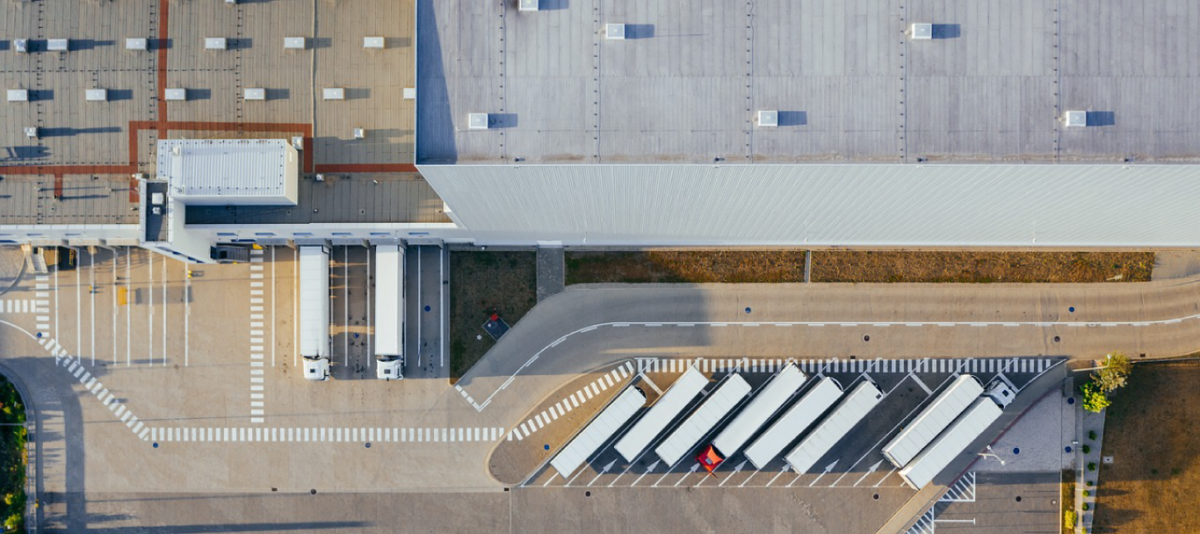By James A. Schnur, CCIM
President and Designated Managing Broker
Integrated Real Estate Solutions
LinkedIn
The “green revolution” brings thoughts of solar energy, wind power, recycling, and energy-efficient appliances. However, the green revolution also impacts industrial spaces, prompting the adoption of a variety of eco-friendly practices in warehousing. What are some of these new approaches and how do they help industries reduce their environmental impact?
Energy Efficiency and Renewable Energy
Warehouse managers realize a significant reduction in energy consumption when they replace incandescent lighting with LED bulbs. Compared to traditional lighting, these LED lights are 60 to 80% more efficient, and they produce less heat than halogen or incandescent lights, lowering the load on the HVAC system. Armed with sensors that detect levels of natural light or occupancy, these LED systems can dim or brighten depending on the sensor data, also lowering energy needs.
Harnessing the energy provided by the sun and the wind, some businesses have opted to generate renewable energy on-site by installing solar panels and wind turbines. These green sources of energy enable companies to lower their reliance on fossil fuels.
Sustainable Building Design
Focusing on sustainability, designers are now requiring the use of eco-friendly materials such as recycled steel and are upgrading building insulation. Companies committed to sustainability seek green building certifications, LEED (Leadership in Energy and Environmental Design) and BREEAM (Building Research Establishment Environmental Assessment Method). These certifications developed in the U.S. and Great Britain, respectively, evaluate buildings in various categories of sustainability and assign levels of certification. Companies that achieve a high-level certification demonstrate their commitment to the green revolution.
Owners of older warehouses can opt to retrofit their buildings by upgrading insulation and replacing windows with energy-efficient brands, among other improvements, to shrink their environmental footprint. Redesigning warehouse interiors to allow for proper ventilation also reduces the energy required to heat and cool the building.
Waste Reduction and Recycling
In addition to addressing building design, organizations can reduce waste and use eco-friendly packaging materials in the products they store in their warehouses. Many warehousing organizations are also adopting a “zero-waste-to-landfill” practice by directing their waste to recyclers rather than sending it to landfills.
Water Conservation and Management
Civic-minded industries can also consider water usage by installing low-flow fixtures in their warehouses. They lower the burden on city water companies by using collected rainwater for non-potable needs and recycling greywater from their sinks and cleaning processes. For their outdoor spaces, companies can plant drought-tolerant plants, reducing their water needs for their landscaping and creating sustainable green spaces.
Transportation Optimization
Warehousing companies also optimize transportation to reduce their carbon footprint. They use state-of-the-art routing software to find the most fuel-efficient routes to minimize travel distances and idle time. Load optimization, combining multiple shipments, results in fewer trips and fuller truckloads. Some companies are upgrading their fleets to fuel-efficient, electric, or hybrid vehicles. Another important green practice is the use of electric vehicles to move materials within a warehouse.
Automation and Technology
Employing advanced technology contributes to reduced energy use in warehouses. Automated Storage and Retrieval Systems (AS/RS) optimize space utilization and ensure efficient storage and retrieval of goods within a warehouse. The use of robotics and the optimization of processes within a warehouse also contribute to green goals. In addition, energy management systems, employing the latest IoT technologies, monitor the environment and adjust the HVAC system to maintain a comfortable environment while saving energy.
Employee Engagement and Training
Green energy objectives include educating employees on the value of sustainable practices and environmental stewardship. Many companies promote environmental responsibility in their corporate culture by offering incentives to team members who exhibit a commitment to sustainability.
By integrating these eco-friendly practices, warehouses can significantly reduce their environmental footprints while improving operational performance and aligning with broader sustainability goals.
When considering a new industrial site, look to the professionals at Integrated Real Estate Solutions, Inc. They offer commercial real estate brokerage and consulting services that make in-depth market research, surveys, requirements analysis, and other financial capabilities available, guaranteeing you have the information you need to make a strategic site selection decision. And they can help you assess the pros and cons when making your decision.
Integrated Real Estate Solutions, Inc. provides clients with the in-depth knowledge and experience that is critical to determine the right path to your next move, lease renewal, or strategic repositioning of your real estate portfolio. Contact us or call 847.550.0160 today about your needs and put our success to work for you.

